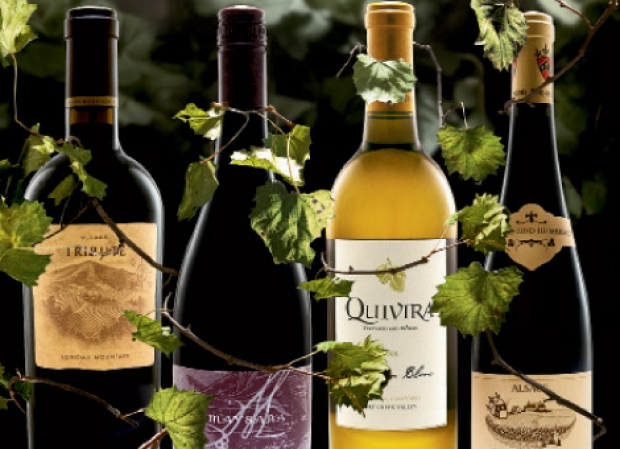Get educated on the benefits of biodynamic wines

Biodynamic wines are sometimes called “über-organics,” but the term misses the point. To distinguish organic from biodynamic, think “the three Rs”: removing, rhythms, and realms. Both organic and biodynamic products are free of potentially harmful substances like pesticides. But biodynamic winemaking also incorporates rhythms (seasons, moon phases) and realms (mineral, vegetable, animal, and human) into farming practices.
Benziger “Tribute” 2005
Sonoma Mountain, CA, $82
The Benziger family is proud of their biodynamic efforts. (If you visit the winery, take their guided tour, one of the best and most extensive in California wine country.) “Tribute” is Benziger’s top-of-the-line Bordeaux blend, predominately Cabernet Sauvignon, with small amounts of Cabernet Franc, Merlot, and Petit Verdot.
Maysara “Jamsheed” Pinot Noir 2007
McMinnville, Oregon, $26
Proudly displaying the Demeter seal on the back label, this Pinot Noir is a perfect example of quality fruit produced by biodynamic farming. Red raspberries and red cherries are prominent, along with soft, well-integrated tannins. “Jamsheed” is a blend of all Maysara’s vineyards.
Quivira “Fig Tree Vineyard” Sauvignon Blanc 2007
Dry Creek Valley, CA, $20
Quivira’s newly released 2008 minimizes the grassy flavors Sauvignon Blanc sometimes presents, in favor of fruit—the citrus you might expect but ripe melon, too. The “Fig Tree Vineyard” was certified biodynamic in 2005.
Domaine Zind Humbrecht “Clos Windsbuhl” Gewürztraminer 2001
Alsace, France, $67
Alsatian wines are among the finest in France but receive less attention than their more famous siblings in Champagne, Bordeaux, and Burgundy. “Clos Windsbuhl” is a single vineyard (clos). Look for lychee and apple flavors, along with incredible richness. This wine can be enjoyed ten years or more following its release.
Wines Courtesy of Northampton Wines, Greenville, South Carolina; Quivira courtesy of Quivira Vineyards and Winery, Healdsburg, California